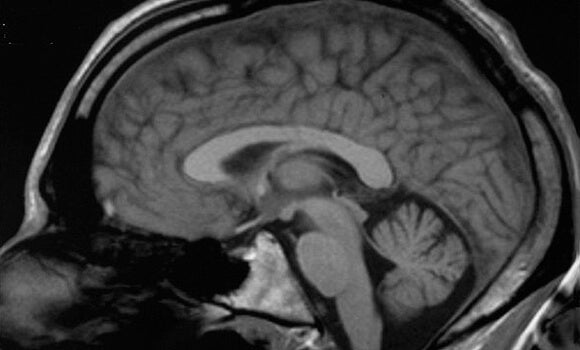A better understanding of the brain may help us better understand thought, behavior and neurological disorders. An improved tool to facilitate this—a new 3D map of the human brain—has recently been released. It’s hoped the map might reveal novel insights into brain function and perhaps help find cures for related diseases.
The new 3D map, called BigBrain, was developed by researchers from Germany and Canada and is 50 times more detailed than previous brain maps. In the past, atlases of the brain were limited by MRI resolution which was about one millimeter. But BigBrain has a resolution of under 20 microns, or thinner than a human hair.
As you might expect, it was no simple matter getting that kind of resolution.
“First, the brain was scanned using a magnetic resonance scanner then imbedded into paraffin and then cut with a microtome for large sections into more than 7,400 sections,” Katrin Amunts of the Institute of Neuroscience and Medicine in Jülich, Germany told Sciencemag.org. After sectioning the brain, researchers began the time and labor intensive process of section imaging, cell body staining, digital removal of anomalies and the precise reconstruction of the brain sections to create a final 3D image.
The finished brain atlas will serve as a detailed reference and provide scientists their closest look at brain structures associated with processes such as disease, cognition and emotion. It is also hoped that BigBrain will help integrate the increasing molecular and genetic data being generated.
Though BigBrain was built from one person—a deceased 65-year-old woman—the team hopes to generate more models in the future to better represent brain-to-brain structural variability.
BigBrain is part of the European Human Brain Project. The Human Brain Project was funded earlier in 2013, receiving a staggering one billion Euros over 10 years from the European Commission. This collaborative project involves 80 institutions, seeks to map the connections of the human brain, and eventually simulate an entire brain digitally.
More recently, the Obama administration launched the BRAIN Initiative—or Brain Research through Advancing Innovative Neurotechnologies and also commonly referred to as the Brain Activity Map Project—to chart the activity of each of the 100 billion neurons in the human brain. This initiative, based upon the Human Genome Project, has secured funding from the National Institutes of Health, the National Science Foundation and DARPA ($110 million) and private research institutes including the Allen Institute for Brain Science, HHMI, the Salk Institute and the Kavli Foundation ($122 million) so far.
Although BigBrain does not reveal gene expression differences or brain connectivity as in the other major ongoing projects, it is a technological advance that can be immediately used by researchers everywhere while the other well-funded projects are progressing. Furthermore, it may eventually be used together with the other projects for more realistic brain modeling and simulation.
The large amounts of money invested in these new research approaches for the brain are very encouraging and promise much in terms of advancing treatments for brain diseases—a critical area made even more important in light of our aging population and increasing rates of associated diseases.
Image Credit: Chrischan/Wikimedia Commons




